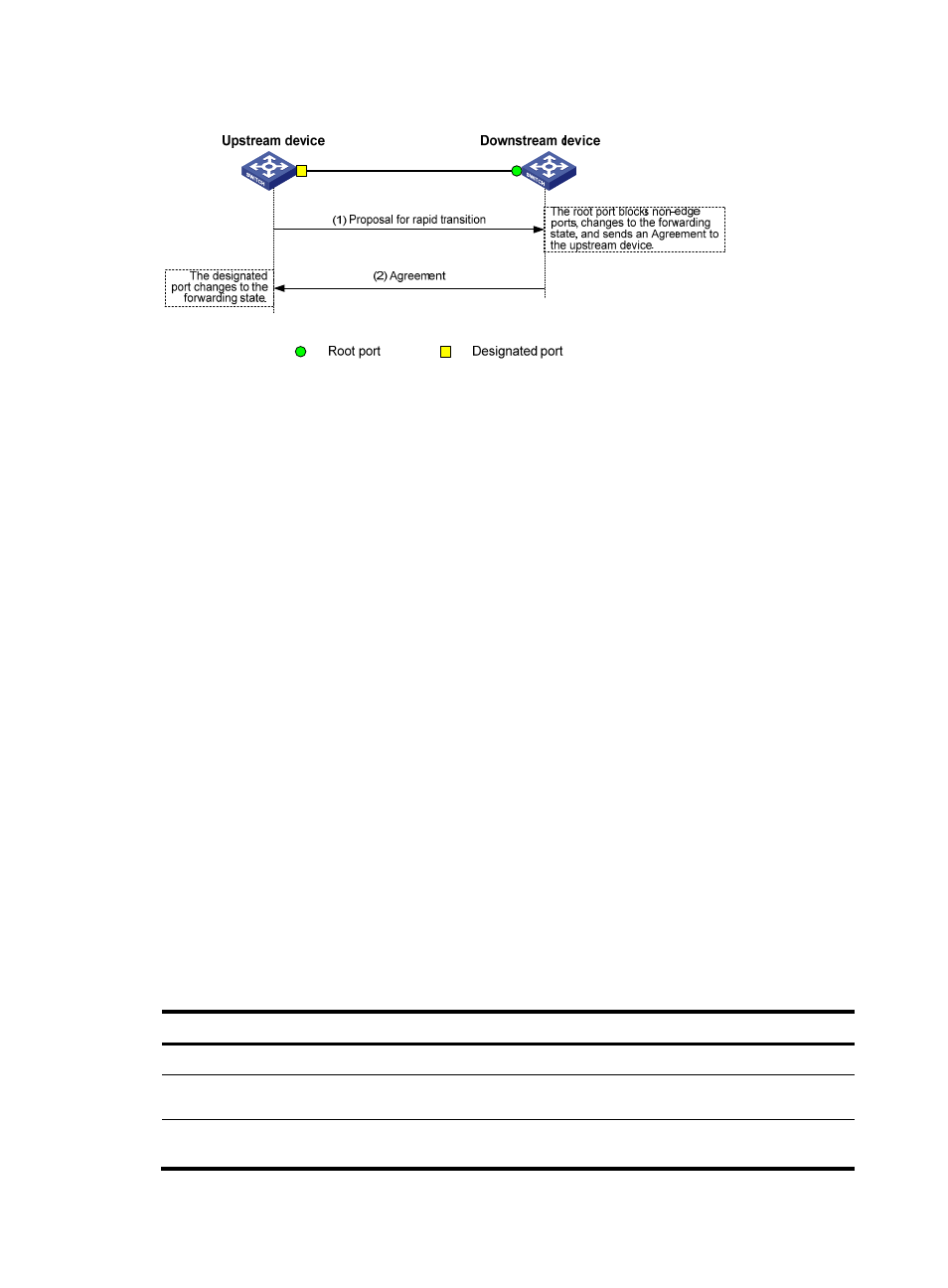Configuration prerequisites, Configuration procedure – H3C Technologies H3C S5560 Series Switches User Manual
Page 131

97
Figure 28 Rapid state transition of an RSTP designated port
If the upstream device is a third-party device, the rapid state transition implementation might be limited
as follows:
•
The upstream device uses a rapid transition mechanism similar to that of RSTP.
•
The downstream device adopts MSTP and does not operate in RSTP mode.
In this case, the following occurs:
1.
The root port on the downstream device receives no agreement packet from the upstream device.
2.
It sends no agreement packets to the upstream device.
As a result, the designated port of the upstream device can transit to the forwarding state only after a
period twice the Forward Delay.
You can enable the No Agreement Check feature on the downstream device's port to enable the
designated port of the upstream device to transit its state rapidly.
Configuration prerequisites
Before you configure the No Agreement Check function, complete the following tasks:
•
Connect a device to a third-party upstream device that supports spanning tree protocols through a
point-to-point link.
•
Configure the same region name, revision level, and VLAN-to-instance mappings on the two
devices.
Configuration procedure
Enable the No Agreement Check feature on the root port.
To configure No Agreement Check:
Step Command
Remarks
1.
Enter system view.
system-view
N/A
2.
Enter Layer 2 Ethernet or
aggregate interface view.
interface interface-type interface-number
N/A
3.
Enable No Agreement
Check.
stp no-agreement-check
By default, No Agreement
Check is disabled.
- H3C S5130 Series Switches H3C S5120 Series Switches H3C SR8800 H3C SR6600-X H3C SR6600 H3C MSR 5600 H3C MSR 50 H3C MSR 3600 H3C MSR 30 H3C MSR 2600 H3C MSR 20-2X[40] H3C MSR 20-1X H3C MSR 930 H3C MSR 900 H3C WX6000 Series Access Controllers H3C WX5000 Series Access Controllers H3C WX3000 Series Unified Switches H3C LSWM1WCM10 Access Controller Module H3C LSWM1WCM20 Access Controller Module H3C LSQM1WCMB0 Access Controller Module H3C LSRM1WCM2A1 Access Controller Module H3C LSBM1WCM2A0 Access Controller Module
